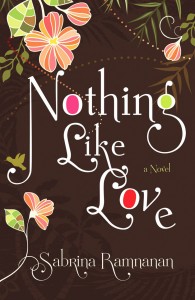Book review: A vibrant novel set in Trinidad
The novel’s central plot–the love story of Vimla and Krishna–anchors a colourful collection of characters and vignettes
Share
Nothing Like Love
Sabrina Ramnanan
Welcome to Chance, a fictional Trinidadian village where the lushness of flora is matched only by the exuberance of personalities. There’s old Auntie Glory, with her bouncing bosom and cranky temper; the bumbling drunk, Puncheon, and his sidekicks, Rajesh and Om; the arrogant pundit, Anand; the sultry temptress, Sangita; her admirer, Faizal, the lone Muslim in a community of devout Hindus; there’s even a cheeky parrot named Sam in the mix. Everyone lives next door to everyone else, taking great offence at (and delight in) his neighbour’s slightest indiscretions. So when two teens are spotted holding hands one night, Chance erupts in scandal. Vimla, the star student at the local high school, and Krishna, son of Anand, are marked as ruined.
The story of what comes next unravels over the course of one month in the summer of 1974. Several chapters are devoted to the events of a single day. For example, the Sunday after the big news breaks, Ramnanan (a debut novelist who came through a creative writing program at the University of Toronto) takes the reader inside Vimla’s home, where her mother is in a fury. Next stop is the temple where Anand, in order to avoid a snooping Glory, pretends to be in such deep meditation that Glory believes him dead and flies away to offer his family her condolences. Then there’s a scene at the schoolhouse, where the headmaster withdraws a job offer from Vimla and, finally, we see Om, Vimla’s dad, trundling off to Lal’s Rum Shop to escape the misery in his daughter’s eyes.
The natural environment is part of the plot; nothing happens in the absence of a frangipani or tamarind tree, a jasmine blossom or a kiskadee call. This helps bring to life both the vibrancy and intimacy of the community, though the book suffers from an overabundance of description; Ramnanan would have been well advised to cut in half the novel’s adjectives. Some of the strongest writing comes in more lighthearted scenes, such as one in which Om and Rajesh discover a litter of kittens in Puncheon’s hammock, and Puncheon is forced to confess to having stolen Raj’s tractor. The novel’s central plot—the love story of Vimla and Krishna—seems almost a pretext for assembling a colourful collection of characters and vignettes.
